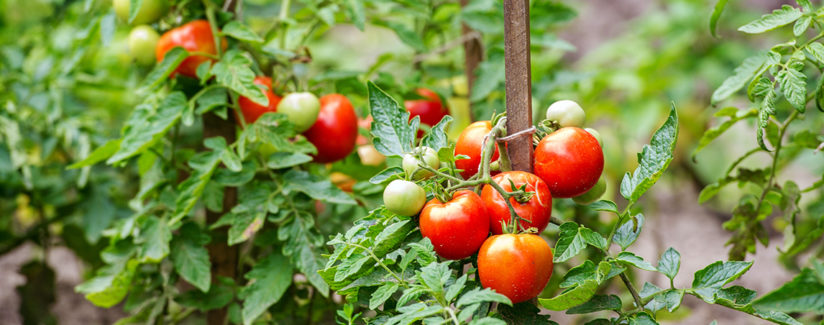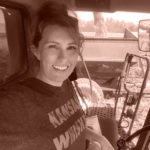
Are Pesticides Needed to Grow Food?
Why do farmers use pesticides? Are they necessary in today’s farming? Are there regulations for pesticides? We have developed a four-part series that looks at the most common questions about crop protection chemicals used in farming.
Before we dive into what we discovered, it might be helpful to define what pesticides are. Pesticides are a broad category of compounds that are used to eliminate or reduce pests, such as weeds, insects or fungus. Pesticides are used by farmers to protect animals from insects, the same way people use pesticides to protect their pets from fleas and ticks. Pesticides are also used in homes and gardens. They may be made from natural or synthetic products. The series will look at Are Pesticides Safe for Food Consumption? Are Pesticides Safe for the Environment? What’s the Difference Between Pesticide-Free and Organic?
For detailed information about why farmers use pesticides on crops they grow, we got in touch with Dr. Steve Savage, a plant pathologist who works with the non-profit CropLife Foundation and creates a bi-weekly podcast called POPAgriculture. We also talked to a farmer to find out about pesticides used on crops.
“Most farmers, including both conventional and organic, need to use pesticides because there are various organisms that depend on plants, but do so in ways that are damaging to the crops in terms of yield, quality and even viability,” Dr. Savage said. “These pests include insects, mites, nematodes, fungi, bacteria and viruses. Weeds also compete with the crop for nutrients, water and light.”
Jenny Burgess and her husband raise wheat, corn, soybeans and grain sorghum in Kansas. They are first-generation farmers who have built and work their farm themselves.
“On our farm, we use technology and tools to help our crops grow to the best of our ability. Herbicides and insecticides are just a couple of those tools,” Burgess said. “When used correctly, these tools or technologies will help our crops grow to their best potential. Anything that has room to grow without weeds taking water and nutrients away from the crop, or bugs that don’t eat up it, can grow.”
Herbicides, a type of pesticide that kills weeds, and insecticides, which target insects, are important to enable farmers to grow food crops. These compounds enable farmers to use land, water and resources more efficiently, which also helps improve the “footprint” of carbon and energy use, Dr. Savage said. Benefits also show up in shopping carts and pantry shelves. Because farmers can minimize crop losses by using herbicides, we have access to a more diverse, high-quality and affordable food supply.
“If there were no pesticides, some crops would not even be practical to grow. The quality of many crops would be lower, and they would definitely be more expensive,” he explained. “Organic growers use approved natural pesticides, but these are often not as effective or even as safe. The lower yield for organic is a major reason for its higher cost. It is an indicator of the impact pests could have on the price of food without pesticides.”
In the United States, the Environmental Protection Agency evaluates all pesticides before they are approved for use.
“We assess a wide variety of potential human health and environmental effects associated with the use of the product. The company that wants to produce the pesticide must provide data from studies that comply with our testing guidelines. We develop risk assessments that evaluate the potential for harm to humans, wildlife, fish and plants, including endangered species and non-target organisms; and contamination of surface water and groundwater from leaching, runoff and spray drift,” the EPA states.
Since the EPA was established in 1970, some of the older pesticides that had more serious environmental impact have been banned, Dr. Savage said.
“With the investment of billions of dollars in new chemical discovery programs over the next several decades, the overall hazard levels of pesticides have dropped dramatically such that most now fall into the EPA’s categories ‘slightly toxic’ or ‘essentially non-toxic,’” he said. “This is because they are mostly now much more specific in that they typically affect enzyme pathways in the pests that do not even occur in animals. Quite a few live biological agents have also been developed with are also very pest-specific in their effects.”
The EPA regulations also include requirements for worker personal protective equipment and re-entry intervals, meaning how soon someone can return to the field after the application and pre-harvest intervals to ensure that those who work on farms as well as those who consume food are safe.
“Each year the U.S. Department of Agriculture evaluates around 10,000 samples from the food supply and consistently finds that residues found are below to well below the conservative tolerances. Also, farmers and other pesticide applicators are required to take part in detailed and continuing safety training so that they know very well how to follow the regulations,” Dr. Savage said.
Farmers have an important role in making sure pesticides are used properly.
“Pesticides are most commonly used in ‘integrated pest management programs’ which also include genetic resistance, pest avoidance, fostering of beneficial organisms, crop rotations, plant biotechnology and other approaches. This diversity of strategies increases the resilience and efficacy of the pest control system,” Dr. Savage said.
“Many times, I hear or read that we ‘drench’ our crops with so much chemical and don’t care when or where we spray,” Burgess said. “That’s disheartening to hear. My husband and I are very responsible with what we do every day. Special nozzles that create uniformed droplet size combined with speed of tractor, and proper amounts of chemical make it minimal spray”
“Chemicals should be used only when needed and used sparingly. Using too much could cause harm to our soil health as well as run off could harm any wildlife in the area. Chemical are a great tool to help us, but they are expensive,” she said.
She said they use about 24 ounces of herbicide per acre, which is the equivalent of two cans of soda pop for an area about the size of a football field. The rest of the liquid being applied to the field is water.
Summary
Pesticides are used on farms to help grow food by protecting plants from things that would harm them. They help farmers to use land and water more efficiently and enable us to enjoy more variety of foods with better quality. Regulations are in place to make sure pesticides are used safely.
Other articles in this series:
Are Pesticides Safe for Food Consumption?



























